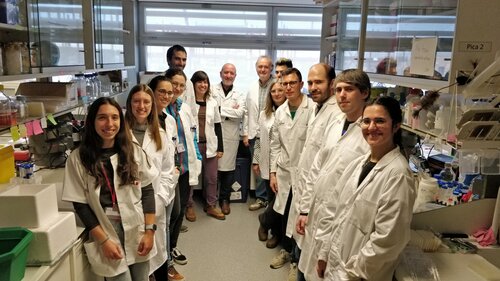Longer-lived women have lower risk of multisystem diseases than men
According to research led from Lleida, which has analyzed the medical history of nearly 500,000 people over 50 years of age
Women with longer lives are less susceptible to multisystem diseases-those that affect more than one organ system, such as the digestive and respiratory systems-than men. In addition, the onset of diseases is delayed in older people, both women and men. These are some of the conclusions of a study led in Lleida by the University of Lleida, the Lleida Search Support Unit of the Jordi Gol University Institute for Primary Health Care Research (IDIAPJGol) and the Institute for Research in Biomedicine of Lleida (IRBLleida).
The research, published in the journal BMC Medicine, highlights the relevance of electronic medical records in the study of the aging process and opens up new possibilities in the prevention of age-related diseases that should help primary care professionals to design individualized care and treatment plans.
"Health interventions focused on delaying aging and age-related diseases should be the most effective in increasing life expectancy in health," explained Mariona Jové, a professor at the University of Lleida, who participated in the study. "These findings offer valuable information for primary care professionals to improve the quality of life of the population in Catalonia, through individualized care," added the researcher.
The study was carried out with data from the Information System for the Development of Primary Care Research (SIDIAP) on almost half a million people over 50 years of age who died in Catalonia between 2006 and 2022. The study of these data has provided a global view of how diseases affect longevity and quality of life in women and men. "The results show that, as longevity increases, the onset of diseases is progressively delayed, both those affecting one organ system and several. We have observed that the number of individuals who avoid diseases increases when they are over 87 or 88 years old, although it ends up decreasing when the person approaches the age of death," said IDIAPJGol researcher Joaquim Sol. "Our objective is to study, at the population level, the patterns of disease specific to each sex associated with human life expectancy," confirmed the researcher.
A slower rate of aging implies a lower risk of developing diseases and premature death. Therefore, the main challenge for modern societies is to ensure that the increase in life expectancy is accompanied by an increase in healthy life. In this sense, understanding the relationship between the age of onset of diseases and human longevity must provide tools to increase both longevity and health of individuals.
The research has been funded by the University and Research Grants Management Agency (AGAUR), the Department of Health, the Diputació de Lleida, the Institut Universitari de Recerca en Atenció Primària Jordi Gol (IDIAPJGol) and the Instituto de Salud Carlos III.
Article reference:
Sol, J., Ortega-Bravo, M., Portero-Otín, M. et al. Human lifespan and sex-specific patterns of resilience to disease: a retrospective population-wide cohort study. BMC Med 22, 17 (2024). https://doi.org/10.1186/s12916-023-03206-w

The project research team






